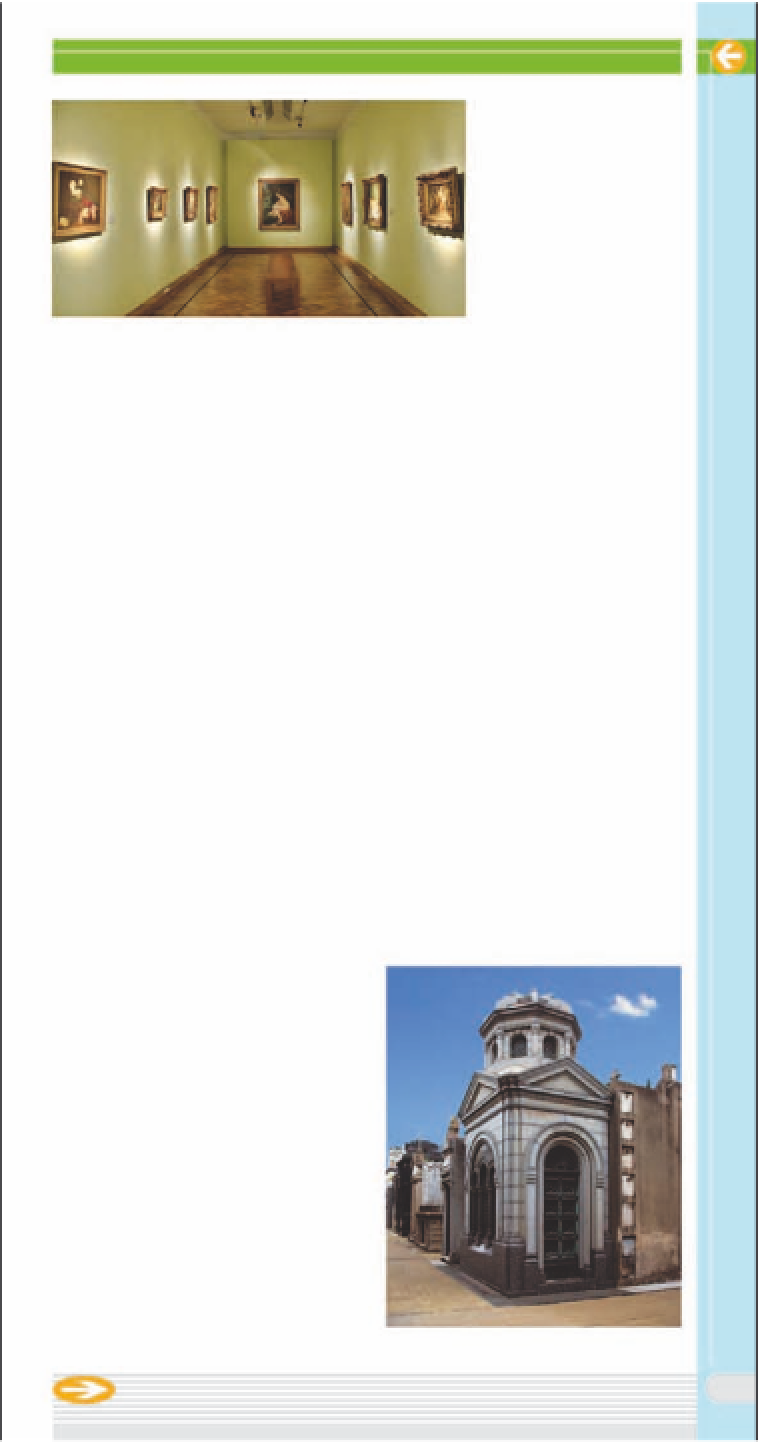Travel Reference
In-Depth Information
£
Museo Nacional
de Bellas Artes
Buenos Aires' fine
arts museum, the
MNBA was founded
in 1896 and houses
over 12,000 works of
art. Permanent
collections on display
include pre-Columbian
art, Argentinian art of
the 19th and 20th centuries, and
international art by old and
modern masters, including Goya,
El Greco, Van Gogh, Picasso,
Kandinsky, and Miró. An
auditorium screens films daily
(see pp16-17).
$
Cementerio de la Recoleta
Museo Nacional de Bellas Artes
!
Avenida 9 de Julio
Conceived in the 1930s as a
means of alleviating gridlocked
north-south traffic in the city
center, Avenida 9 de Julio cut a
459-ft (140-m) wide swath from
Constitución station to Retiro.
The city's youngest public work,
this avenue creates a symbolic
link between the traditionally
working-class southern
barrios
and the aristocratic north, yet the
frenetic span in between knows
no such distinctions. Along this
busy and exciting street, a visitor
is as likely to enjoy a 10-peso
pizza along its jacaranda-lined
flanks as catch a deluxe tango
dinner show in a neighboring
hotel's ballroom
(see pp20-21)
.
@
Avenida de Mayo
Explored via a labyrinth of
streets and narrow alleys,
Cementerio de la Recoleta
,
the
fabulous city of the dead, is the
burial place of presidents,
military generals, and patrician
families of Argentina. Its high
walls protect mausoleums of
granite and bronze topped by
cupolas and marble sculptures
of angels and crying mothers.
Its most famous resident is
Evita Perón
(see p58),
though
the most beautiful tomb is that
of José C. Paz
(see pp10-11)
.
The city's first great
boulevard, the grand Avenida de
Mayo was built in 1894 to link
Argentina's two seats of
governmental power - the Casa
Rosada presidential palace
and the Palacio del Congreso.
Fronted by Parisian palaces
and cupolas, the Avenue's
magnificent architecture is a
reflection of Buenos Aires'
Francophile pretensions of the
time. Ironic, then, that it was the
Spanish community who made
the avenue its own, lining it with
Iberian cafés, restaurants, and
bars, most of which are open
and very popular even today
(see pp14-15)
.
Cementerio de la Recoleta
65

































